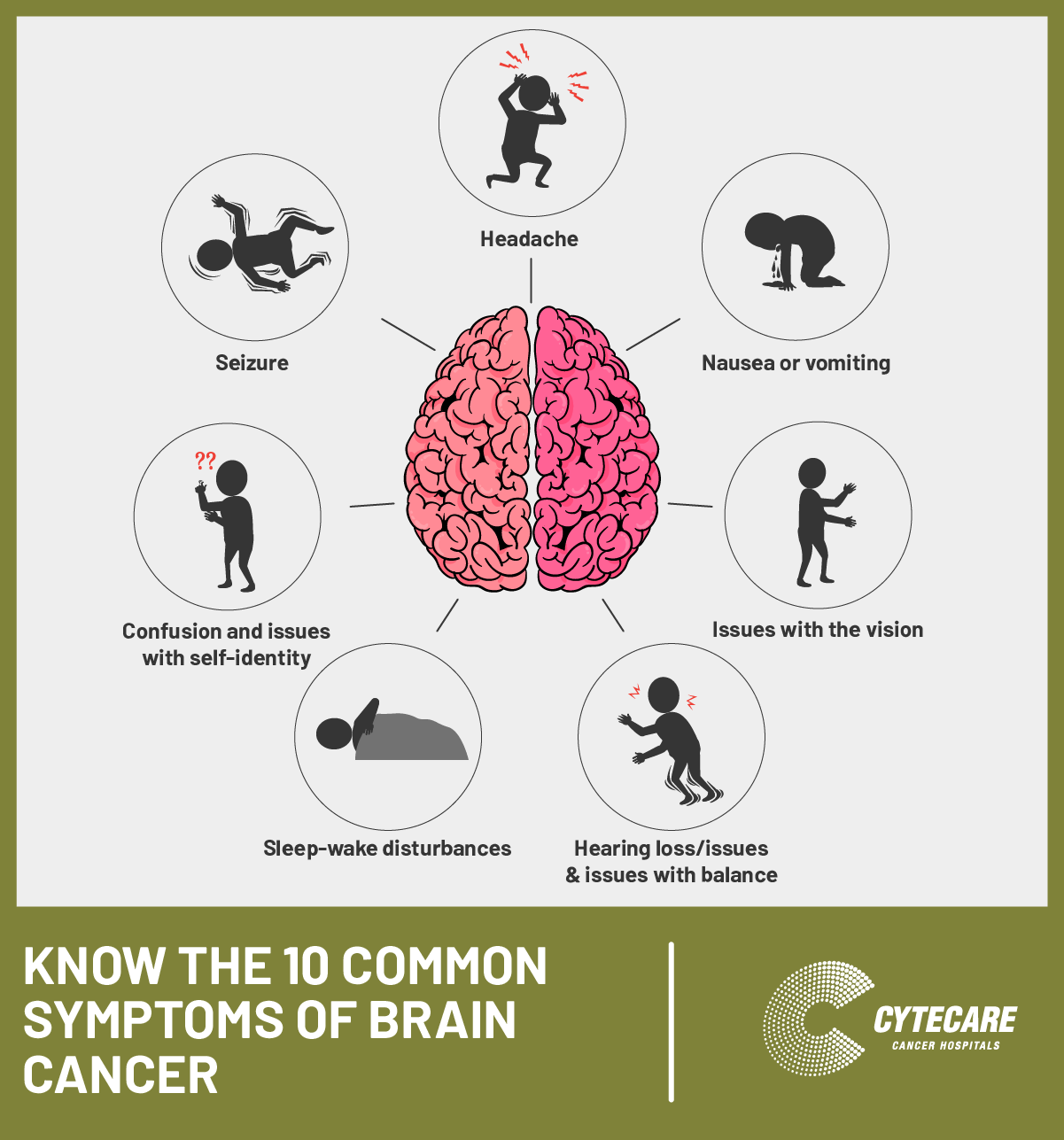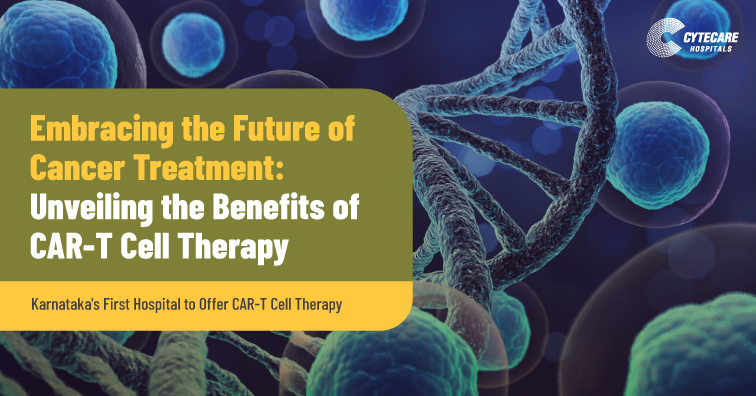The 10 Most Common Brain Tumor Symptoms

Our Brain is the commander-in-chief for all functions in the body and the center of the nervous system. It is the most complex and the fattiest organ made of billions of nerve cells, which connect and communicate through a vast and complex network of neurons throughout the body to coordinate several functions such as emotion, movement, sensation and various other aspects of physiology.
The human brain consists of three main anatomical parts; the forebrain, midbrain and hindbrain. Each of these contains a fluid-filled cavity called ventricle. Each side of the brain contains 4 lobes- the frontal lobe, parietal, occipital and temporal lobe. Each lobe controls a specific function of the body such as cognition, speech, motor, etc. Like all cancers, malignant growth arising from any area is referred to as primary brain cancer.
Cancers that metastasize to the brain from other organs are termed as secondary or metastatic brain cancer. It is often rare for brain tumors to spread to other parts of the body (excluding spine) due to the blood-brain barrier in the body.
There are over 120 types of brain and central nervous system (CNS) tumors. The most accepted WHO classification system is used for identifying tumors of the CNS (Brain & Spine). It is important to note that brain tumors may have different subtypes too. For example, astrocytoma can be anaplastic astrocytoma or juvenile pilocytic astrocytoma. Overall, CNS cancers (Brain & Spine) contribute to less than 2% of all malignancies. Although considered rare, brain tumors contribute significantly to morbidity depending on the location and extent of the tumor.
The prognosis of each brain tumor depends on several factors such as the extent of surgical resection, performance status, grade, age of patient and molecular characteristics. Among CNS tumors, gliomas are the most common type of brain tumor. Some of the most common types of brain tumor include glioma, meningioma, nerve-sheath tumors, and pituitary tumors.
The biology of pediatric brain cancers is different from an adult; they behave and respond to treatment differently. Pediatric brain tumors are the second most common type of tumor in children after leukemia. Children tend to have a better prognosis when compared to adults. Some of the common pediatric brain tumors include Ependymoma, astrocytoma, medulloblastoma and brain cell glioma.
What is “Blood Brain Barrier”?
A semi-permeable membrane separates the blood from the cerebrospinal fluid in the brain and spine, constituting a barrier to the passage of cells, particles and large molecules. It is therefore difficult for tumors of the CNS (brain & spine) to metastasize to another part of the body.
The blood-brain barrier also is a challenge in treating brain tumors with certain drugs/chemotherapy. Hence new research involving adenoviral vectors and poliovirus is being exploited effectively for brain cancer treatment.
Brain tumor symptoms can be vague or specific. As the tumor grows, it could apply pressure on the brain or spinal cord, increasing the intracranial pressure or displacing adjacent brain (midline shift). Each part or lobe of the brain is responsible for a specific function. Therefore depending on the area of the brain where pressure is exerted or displaced, symptoms could vary.
The 10 most common brain tumor symptoms:
- Headache
- Seizure
- Nausea or Vomiting
- Issues with the vision
- Peripheral neuropathy & neurological symptoms
- Confusion and issues with self-identity
- Memory loss and issues with perception & judgement
- Sleep-wake disturbances
- Communication Issues (Language impairment)
- Hearing loss/issues & issues with balance
-
Headache:
Not all headaches are indicative of brain tumor. Only a minority of patients who experience headaches suffer from it. The rapid growth of the tumor and location such as those of the posterior fossa are known to cause more headaches than others. The classic brain tumor headache is not as common as migraine or tension-type headache. Imaging (MRI/CT) is an important and necessary step to determine the reason for the headache.
The increase in intracranial pressure (due to the tumor) along with neurogenic inflammation as well as central sensitization through trigemino-vascular afferents on the meninges or the cranial nerves could be possible explanations for mechanism of headache related to tumors.
-
Seizure:
A seizure is a sudden surge of electrical activity in the brain. The nature of seizures can vary depending on the lobe it affects. Some seizures may be hardly noticeable, while others may be extremely debilitating. Also commonly known as convulsions or epilepsy, is the most common brain tumor symptoms. It presents as onset symptoms in 20 to 40% of patients, while a further 20-45% patient presents with seizures during the course of the disease.
Among all types of brain tumors, seizures are most common in glioneuronal tumors (70-80%) especially in patients with frontotemporal lesions. 60-70% of patients with low-grade glioma, 20-30% with meningioma and 20-35% of metastatic brain tumors also suffer from seizures. Once a tumor is surgically resected, about 60-90% of patients become seizure-free.
A gross total resection, early therapy and lack of generalized seizures are favorable factors for prognosis. Brain-tumor related epilepsy are often resistant to drugs and pose a challenge in treating these patients, therefore new generation drugs may be preferred. Recurrence or worsening of seizures during the course of the disease may signal tumor progression. Seizures are classified and described based on various parameters such as wherein the brain the seizure begins, a person’s level of awareness during a seizure, whether motor (movement) happens during a seizure. Symptoms of seizure could include loss of consciousness, loss of control of body functions, twitching and relaxing of muscles, change in sensation of smell, vision or sight without losing consciousness, partial loss of consciousness and repetitive or twitching movements. -
Nausea or vomiting:
Intracranial pathology such as brain tumor can cause nausea or vomiting. The increased intracranial pressure or the direct stimulation of the vomiting center in the brain stem can trigger vomiting or nausea in brain tumor patients. Vomiting and nausea are also common symptoms of other pathology such as gastrointestinal infections. Hence, it is important to look for other neurological signs and clearly evaluate the cause of nausea and vomiting.
In pediatric cases, however, intractable or chronic vomiting without nausea and deregulation of water and electrolyte balance could indicate the presence of intracranial process, even in the absence of other neurological signs.
-
Issues with the vision:
If a brain tumor is in the region affecting vision or optic nerve, then it could produce symptoms such as blurred vision, double vision, foggy vision, partial or total blindness, color blindness, loss of peripheral vision. The tumor could result in optic neuropathy either as a result of a direct tumor or due to elevated intracranial pressure and optic nerve damage. Cranial nerve VI, III and IV dysfunction result in diplopia (double vision) and optic nerve involvement causing visual blurring.
-
Peripheral neuropathy & neurological symptoms:
Brain tumor and CNS cancer can cause significant neurological morbidity. Both the central nervous system and the peripheral nervous system are susceptible to the effects of the disease. The cancers can metastasize to the spine and in many cases can cause spinal cord compression or cord transection due to the involvement of the vertebra in cancer.
It can also affect coagulation or cause hyper-coagulability and cause cerebrovascular issues. Some of the neurological symptoms include jerky or uncontrolled movements, tingling sensation on one side of the body and muscle weakness in face or arm. In cases where the spinal cord or nerve root is involved, patients may also experience issues with bladder control and bowel movements. Tumors may result in sensory loss or changes in deep tendon reflexes. Extra-ocular nerve involvement can also cause facial sensory deficits.
-
Confusion and issues with self-identity:
Brain tumor can cause alterations to neurocognitive ability. Confusion regarding self-identity may also arise. The tumor can cause alterations to consciousness and neurocognitive domains that could affect self-identity. For some patients, the manifestation of neuropsychiatric symptoms may be the first manifestation of the brain tumor. Such a patient will require neuropsychiatric evaluation and support throughout the treatment.
-
Memory loss and issues with perception & judgment:
Brain tumors can affect the neurocognitive domain such that memory and perception may also be affected. The patient may be unable to recall events. A patient’s ability for perception may be greatly affected and may include symptoms of brain tumor such as hallucinations and issues with impulse control. Therefore neurocognitive symptoms influence a change in self-identity, personality as well as perception.
-
Sleep-wake disturbances:
Issues with the sleep-wake cycles are the most severe and common symptoms reported by primary brain-tumor patients. The decline in cognition impairment, fatigue etc could be one of the reasons for disturbance in the sleep cycle. Intracranial inflammation could also play a role in sleep disturbances. Patients with sleep-wake disturbances may complain of difficulty initiating or maintaining sleep, waking too early, waking up feeling un-refreshed, excessive day time sleep, etc.
-
Communication Issues (Language impairment):
The temporal lobe is responsible for processing semantics both speech and vision. Along with the frontal lobe, they are able to produce and understand languages. However, if a tumor affects their function, a patient may have speech-related issues. Communication issues may include language impairment, speech difficulties, loss of memory resulting in loss of words and poor recall, inability to judge a conversation, etc.
Dysphasia or language impairment is the most common difficulty experienced in patients with a brain tumor. Inability to describe an object, only being able to say a few words, inability to produce meaningful language, not understanding what others are saying are some of the symptoms noted. The emotional effects of dysphasia can be very devastating and patients may also suffer from depression. A brain cancer treatment must include rehabilitation support to restore communication and language-related issues.
-
Hearing loss/issues & issues with balance:
In brain tumors that affect VIIIth nerve, hearing loss or impairment, tinnitus (ringing noise in the ear) is common. Hearing loss may be noted by a reduced ability to understand what is being spoken. The hearing loss may be gradual or sudden. If the tumors extend beyond and affect the vestibular system which is responsible for maintaining body balance, one may experience vertigo, dizziness, gait and balance issues (disequilibrium).
In some cases, the pressure of the infiltrating tumor may also cause facial pain or weakness. A benign tumor called the Acoustic neuroma can also cause similar conditions. Only a complete evaluation from a specialist will be able to diagnose the true nature and cause of the symptom.
Besides the above common brain tumor symptoms, patients may experience other less common and vague symptoms such as lactation from breasts, growth spurts in feet or hands(pituitary tumors) inability to look upward (pineal gland tumors). Not all symptoms are representative of brain tumor. Some of these could also be due to benign tumors as well as other conditions or co-morbidities. However, if symptoms persist or worsen, individuals should consult doctors to help find the cause of the problem. If these signs are caused due to brain tumor, besides cancer treatment relieving symptoms is a major goal of treatment.





